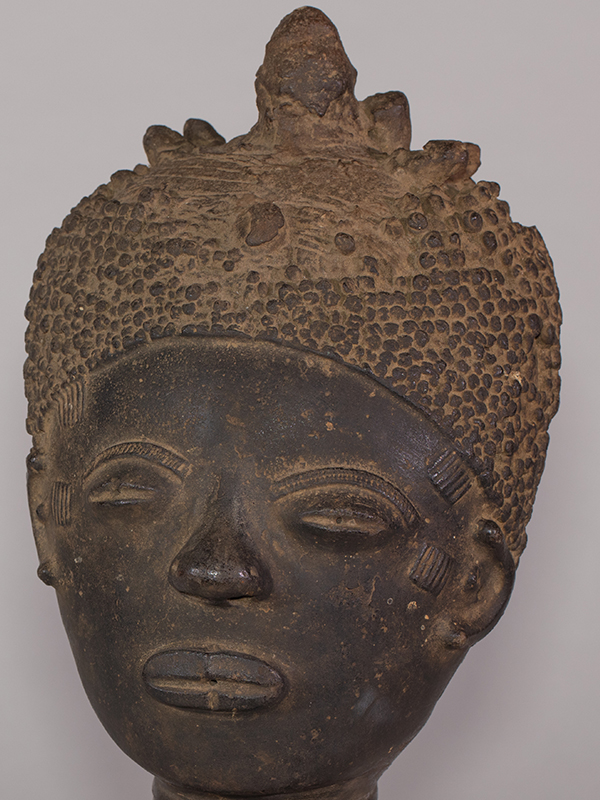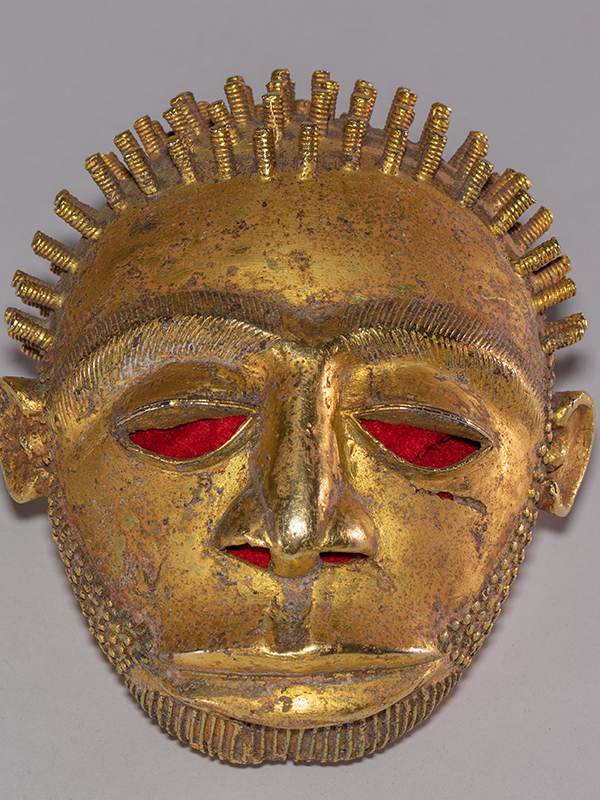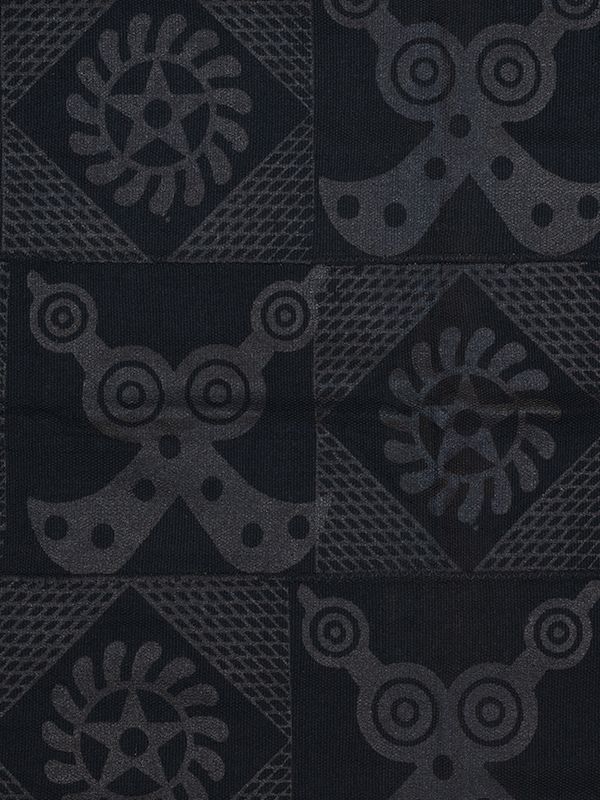
Commemorative head, date unidentified
Artist unidentified
Akan peoples, Ghana
Commemorative head, date unidentified
terracotta
height 13 3/4 inches (35 cm)
On loan from the Wyvern Collection
Terracotta heads were used in Akan funerals and likely placed in a sacred grove with other clay objects to aid the transition of a powerful individual into the world of the ancestors. Terracotta heads like this one often commemorated Akan leaders and royals, and this example may reference a queen mother. Akan rulers retained prestige and power after death. Scarification marks on the face and neck with life-like proportions accentuate this figure’s individualism, while symmetry heightens them to a divine status.
Noah Keates ’20

Sword ornament, early twentieth century
Artist unidentified
Akan peoples (Asante subgroup), Ghana
Sword ornament, early twentieth century
gold and felt
6 x 5 inches (15.2 x 12.7 cm)
On loan from the Wyvern Collection
Ornaments placed on ceremonial sword blades represent the continued authority of Asante leaders during the British colonial period from the late nineteenth to mid-twentieth century. Gold was valued for trade and was a marker of dominance and prestige in the pre-colonial Asante empire. While Asante people and scholars still debate exactly who is represented on figural sword ornaments, facial features suggest portrayal of an authoritative person. Depictions of human heads in ornaments are called “the head of Worosa” after a chief whom Asante leaders conquered.
Destiny Kearney ’21

Adinkra cloth, 2013–2015
Gabriel Boakye
Ghana, 1966–2018
Akan peoples (Asante subgroup), Ntonso, Ghana
Adinkra cloth, 2013–2015
Hand-woven cotton cloth and acrylic
Anonymous loan
Adinkra cloth is a hand-printed fabric made among Akans of Ghana, a practice that dates to at least the early nineteenth century in Asante society. Historically made as a stamped cloth for Asante royalty to wear at events, adinkra cloths are patterned with symbols laden in meaning. This cloth design includes the symbol akofena meaning sword. Akofena represents courage, strength, and state authority, while also highlighting the triumphant legacy of the pre-colonial Asante kingdom. Gabriel Boakye screen-printed this adinkra cloth, with assistance from his family members, using new printing technology that upholds Asante cultural traditions in contemporary life.
Destiny Kearney ’21


